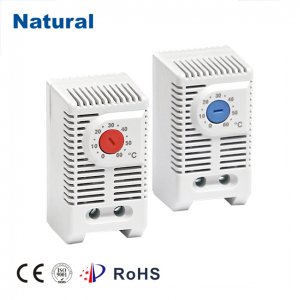"Precision Temperature and Humidity Control for Optimal Env
Release time:2023-09-17 11:57:19
In various industrial and domestic applications, maintaining precise temperature and humidity levels is crucial for ensuring product quality, operational efficiency, and human comfort. A pivotal component in achieving this balance is the temperature and humidity controller. This article explores the significance of temperature and humidity control, its applications, and the advancements in controller technology that have revolutionized these processes.

Temperature control is essential in industries ranging from pharmaceuticals and food production to electronics manufacturing. Each product demands specific environmental conditions to preserve its integrity and extend shelf life. For instance, vaccines require stringent temperature control to remain effective, while electronic components are vulnerable to damage in high humidity environments. A temperature controller employs sensors to monitor the ambient temperature and adjusts heating or cooling systems to maintain the desired level. With the advent of digital technology, modern temperature controllers provide precise and rapid adjustments, minimizing temperature fluctuations and ensuring consistent quality across production lines. Similarly, humidity control is pivotal in environments where excess moisture can cause mold growth, corrosion, or discomfort. Industries such as agriculture, museums, and data centers rely on accurate humidity regulation. A humidity controller operates by monitoring the moisture content in the air and activating humidifiers or dehumidifiers to maintain the desired humidity level. By preventing excessive moisture or dryness, humidity controllers contribute to product preservation and operational reliability.
Advancements in technology have revolutionized temperature and humidity control. Traditional controllers relied on mechanical components, limiting their precision and responsiveness. However, the integration of microcontrollers and sensors has led to the development of smart controllers. These controllers can receive real-time data, analyze trends, and make instantaneous adjustments. Furthermore, connectivity features allow remote monitoring and control, making it possible to manage environmental conditions from a distance. This is particularly valuable for industries with sensitive products and processes that require continuous supervision.
In recent years, the Internet of Things (IoT) has propelled temperature and humidity control to new heights. IoT-enabled controllers can collect data from multiple sensors spread across a facility. This data is then processed using advanced algorithms to create dynamic control strategies. For example, in a greenhouse, an IoT controller can adjust temperature and humidity levels based on the current weather conditions, plant growth stage, and energy consumption patterns. This level of sophistication optimizes resource utilization while maintaining an ideal environment for the intended purpose.
In conclusion, precision temperature and humidity control are integral to a wide array of industries. The ability to maintain specific environmental conditions ensures product quality, process efficiency, and occupant comfort. Traditional controllers have evolved into smart systems with microcontrollers, sensors, and IoT connectivity. This transformation has enabled remote monitoring, dynamic adjustments, and data-driven optimization. As technology continues to advance, temperature and humidity controllers will play an increasingly vital role in shaping industries and the overall quality of life.
 28 items Patent
28 items Patent
 28 items Patent
28 items Patent
 28 items Patent
28 items Patent

